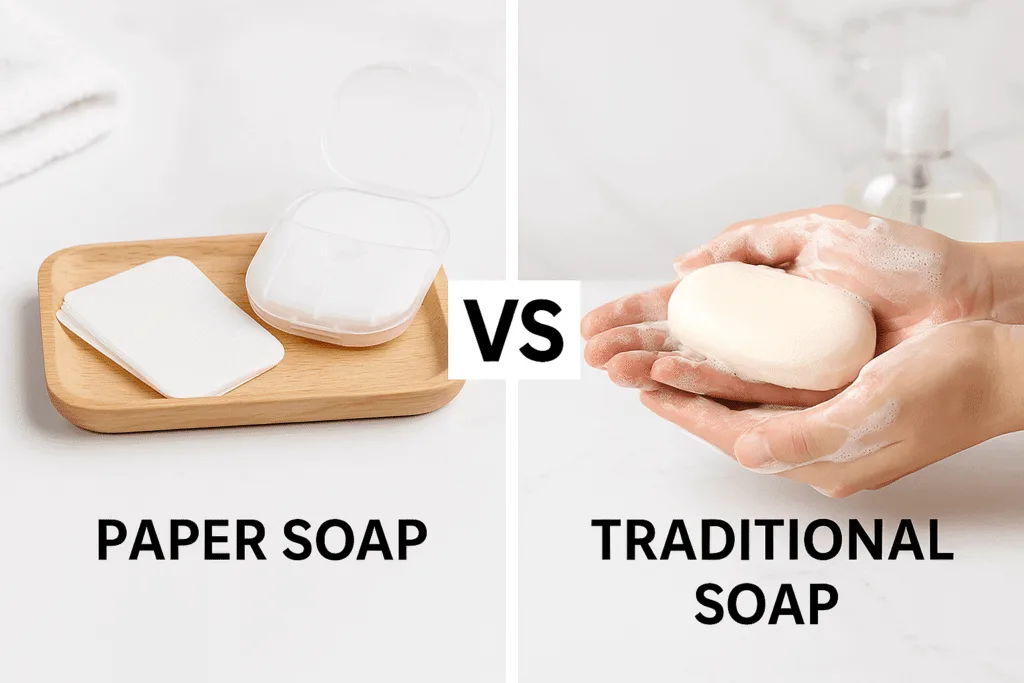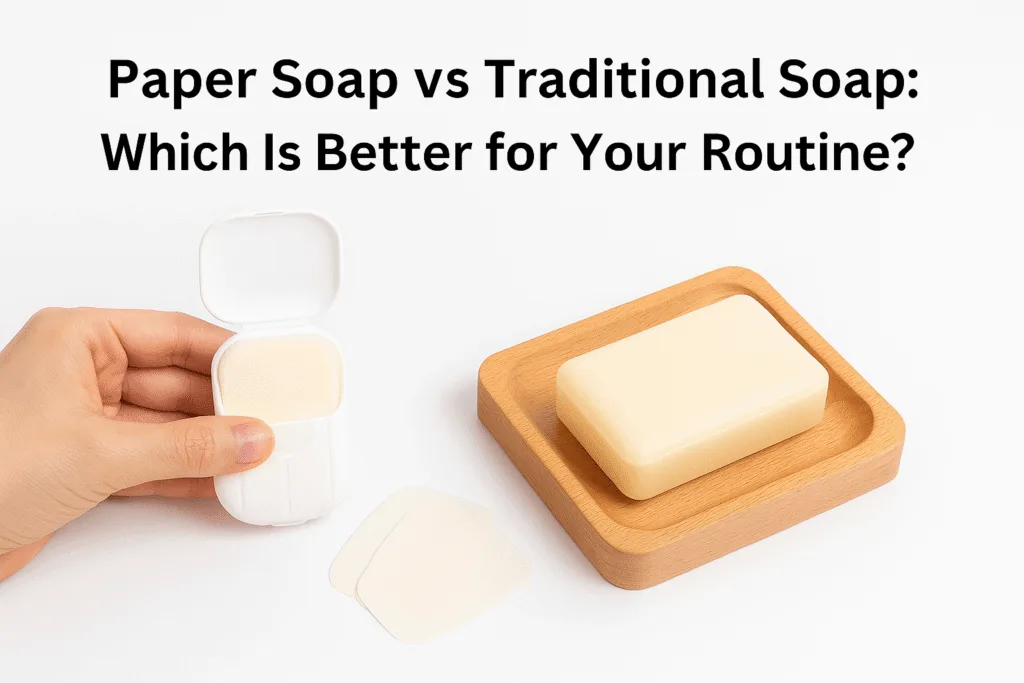When it comes to personal hygiene, soap is an essential product that we use daily. However, with the rise of innovative products, paper soap has emerged as a new alternative to traditional soap. In this article, we’ll compare these two options, exploring their benefits, drawbacks, and suitability for different lifestyles—all while keeping your SEO goals in mind.
What Is Paper Soap?
Paper soap, also known as soap paper, is a revolutionary product that combines the cleansing power of soap with the convenience of paper. These thin, lightweight sheets are impregnated with gentle soap ingredients, designed to lather up when wet and dissolve completely after use. Unlike bulky traditional soap bars or liquid bottles, each sheet fits easily in a pocket or purse, making it ideal for on-the-go cleanliness.

How Does Paper Soap Work?
Simply wet the paper soap sheet, rub your hands together to create a rich lather, and wash as you would with regular soap. The water-activated formula cleanses effectively while leaving no residue, and the biodegradable material breaks down naturally—no messy soap dishes or slippery bars to deal with.
The Advantages of Paper Soap
Convenience and Portability
One of the biggest wins for paper soap is its unmatched convenience. Traditional soap can be a hassle: bars melt into slimy residue, liquid bottles leak in bags, and both require dedicated storage. Soap paper, however, comes in individual, dry sheets that stay clean and compact. Whether you’re hiking, traveling, or commuting, a few sheets in your pocket ensure you’re never without a way to wash up. For outdoor enthusiasts, the lightweight soap paper for outdoor use eliminates the need to carry bulky toiletries, making it a game-changer for camping trips or long hikes.
Hygiene and Safety
Public restrooms, gyms, and shared spaces pose a risk with traditional soap bars, which can harbor bacteria from multiple users. Paper soap solves this problem with single-use sheets—each one is fresh and hygienic, reducing the chance of cross-contamination. Plus, its dry form doesn’t attract dust or grime like wet soap, keeping your cleaning tool itself cleaner. This makes it a smart choice for schools, offices, or any environment where shared hygiene products are a concern.
Environmental Friendliness
For eco-conscious consumers, paper soap offers a sustainable alternative. Many traditional soaps come in plastic packaging, while soap paper is often sold in biodegradable or recyclable materials. Additionally, its precise single-use design minimizes waste—no more half-melted bars thrown away. Brands like Vimisoap prioritize natural ingredients and eco-friendly production, aligning with global efforts to reduce plastic waste. For more on sustainable living, the Environmental Protection Agency offers tips on choosing eco-friendly products like paper soap.
The Advantages of Traditional Soap
Familiarity and Accessibility
Traditional soap has been a staple in households for generations, and its familiarity is a major advantage. Most people know how to use it, and it’s widely available in every store, from corner markets to online retailers. Whether you prefer scented bar soap, moisturizing liquid formulas, or specialty options for sensitive skin, the variety is endless. This accessibility makes it a default choice for many, especially those who prefer sticking to what they know.
Moisturizing Formulations
Many traditional soaps are enriched with ingredients like glycerin, shea butter, or essential oils, which help retain the skin’s natural moisture. This is particularly beneficial for those with dry or irritated skin, as harsh cleansers can strip the skin barrier. Brands like Dove or Cetaphil are known for their moisturizing formulas, offering a comforting cleanse without dryness. For expert advice on skin-friendly hygiene, the Mayo Clinic recommends choosing soaps that balance cleansing and hydration.

Cost-Effectiveness
In terms of budget, traditional soap often comes out ahead. A single bar can last weeks, and liquid refills are usually affordable, making it a cost-efficient choice for families or frequent users. Paper soap, while more convenient, tends to be pricier per use due to its innovative packaging and production. However, many users find the trade-off worth it for the portability and hygiene benefits, especially for occasional or travel use.
Paper Soap vs Traditional Soap: How to Choose
Your decision depends on your lifestyle and priorities:
- Choose paper soap if… you’re often on the go, value hygiene in shared spaces, or want to reduce your environmental footprint. The mess-free soap option for your bag is perfect for busy lifestyles, while the gentle paper-based cleanser for sensitive skin caters to those who need a mild formula.
- Stick with traditional soap if… you prefer a budget-friendly option, need moisturizing benefits, or value the wide variety of scents and textures available.
Conclusion
Both paper soap and traditional soap have their place in modern hygiene routines. Paper soap shines in portability, hygiene, and sustainability, making it a smart choice for travel, outdoor activities, or anyone seeking a hassle-free solution. Traditional soap remains a reliable option for daily home use, offering familiarity, moisturization, and cost-effectiveness.
Ultimately, the best choice depends on your unique needs. Why not try both? Explore high-quality paper soap options designed for convenience and sustainability at Vimisoap’s paper soap collection, and make an informed decision that fits your lifestyle.